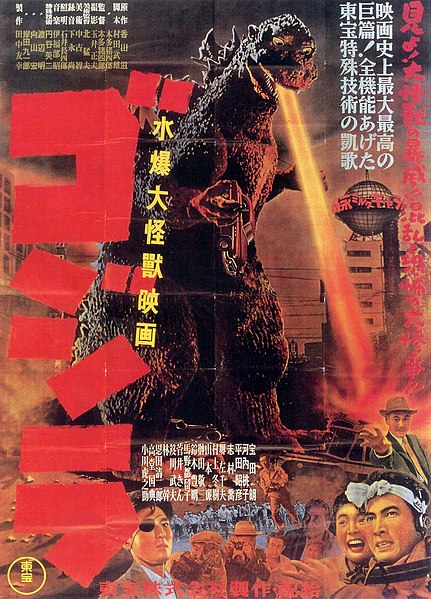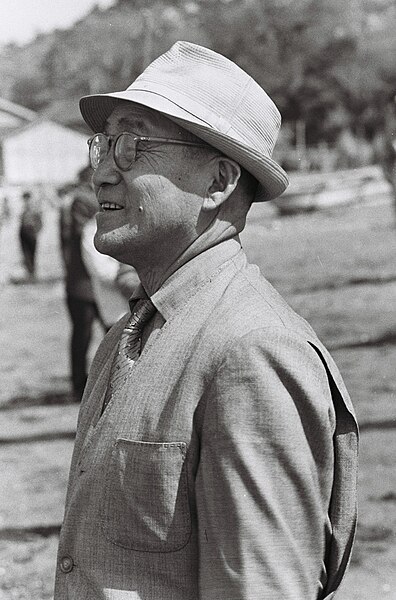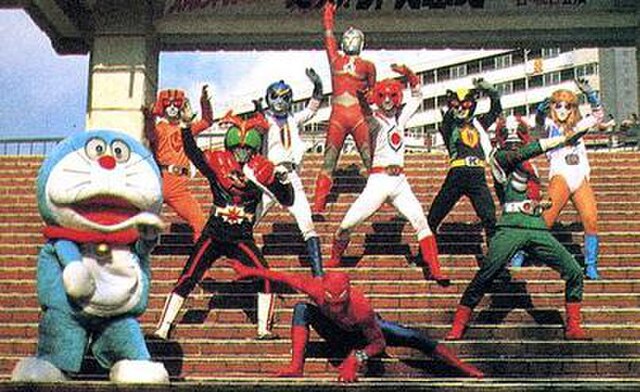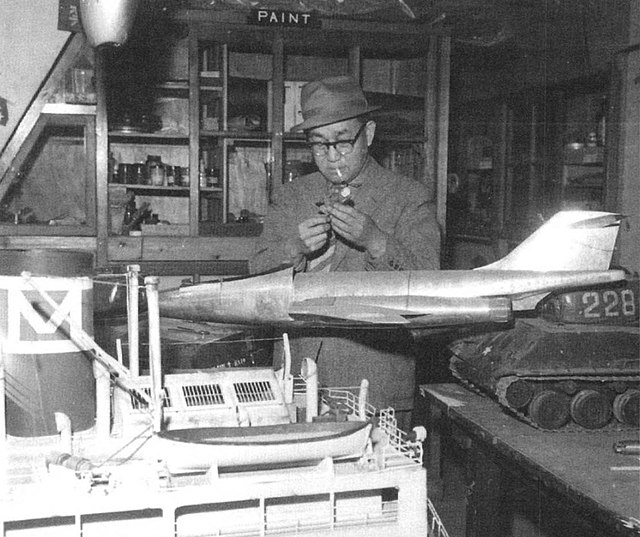Tokusatsu is a Japanese term for live-action films or television programs that make heavy use of practical special effects. Credited to special effects director Eiji Tsuburaya, tokusatsu mainly refers to science fiction, war, fantasy, or horror media featuring such technology but is also occasionally dubbed a genre itself. Its contemporary use originated in the Japanese mass media around 1958 to explain special effects in an easy-to-understand manner and was popularized during the "first monster boom" (1966-1968). Prior to the monster boom, it was known in Japan as Tokushu gijutsu or shortened Tokugi .
Poster for Godzilla (1954). The techniques developed by Eiji Tsuburaya for Toho continue to be used in the tokusatsu film and television industry.
Eiji Tsuburaya is credited as the creator of Tokusatsu. Photographed by Yoshikatsu Kanno on the Miura Peninsula, Kanagawa Prefecture in March 1960.
Protagonists of the popular tokusatsu franchises mostly of the late 1970s (from back to front, left to right): Ultraman Joneus (Ultra Series), Battle Fever J (Super Sentai), Kamen Rider Stronger and Kamen Rider V3 (Kamen Rider Series), and Spider-Man. The photo also features manga character Doraemon on the far left.
Special effects are illusions or visual tricks used in the theatre, film, television, video game, amusement park and simulator industries to simulate the imagined events in a story or virtual world. It used to be called SFX but this short form has also expanded to include “sound effects” as well.
A special effect of a miniature person from the 1952 film The Seven Deadly Sins
A period drama set in Vienna uses a green screen as a backdrop, to allow a background to be added during post-production.
Godzilla co-creator Eiji Tsuburaya is one of the most influential individuals in the history of special effects.
An actor behind-the-scenes with pre-scored "bullet holes" on his costume and squibs blowing open fake blood packets for a gunshot wound stunt.







